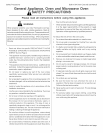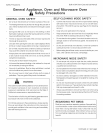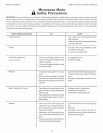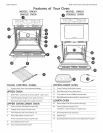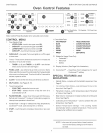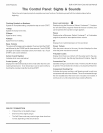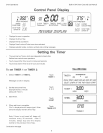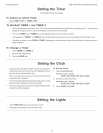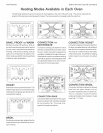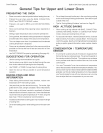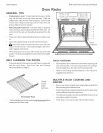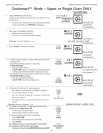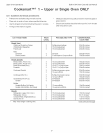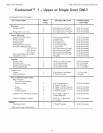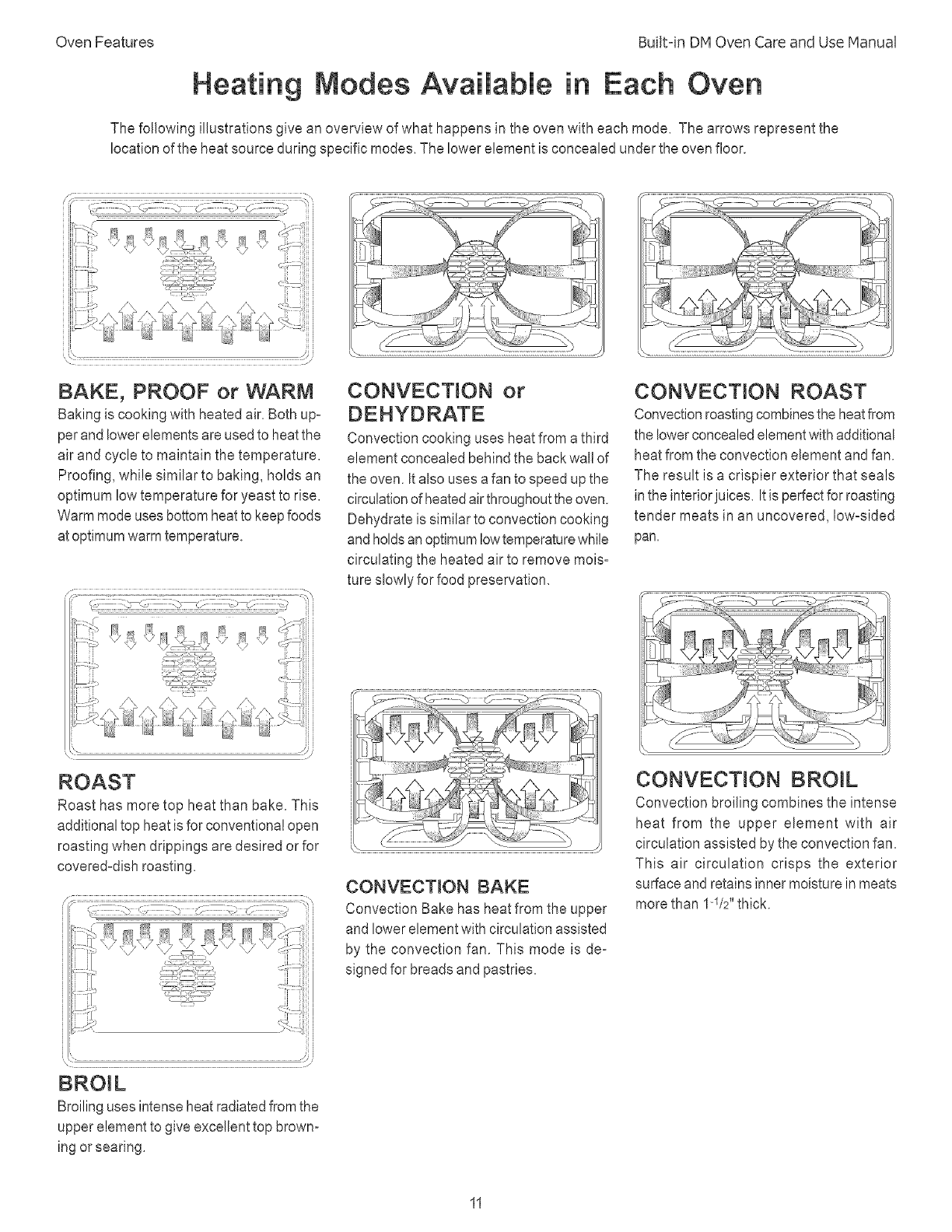
OvenFeatures Built-inDMOvenCareandUseManual
Nodes Available in Each Oven
Thefollowing illustrations give an overview of what happens in the oven with each mode. The arrows represent the
location of the heatsource during specific modes,The lower element isconcealed under the oven floor.
,:'!11_J:>rq,, '/, _t "> -;
_J i_ _J _ >
ii
BAKE, PROOF or WARM
Baking is cooking with heated air, Both up-
perand lower elementsare usedto heatthe
air and cycle to maintain the temperature,
Proofing, while similar to baking, holds an
optimum low temperature for yeast to rise,
Warmmode uses bottomheatto keepfoods
atoptimumwarmtemperature,
..... ,,,_.... _,-_
CONVECTION or
DEHYDRATE
Convection cooking uses heatfrom a third
element concealed behind the backwal! of
theoven. Italso uses afan to speedup the
circulationofheatedairthroughouttheoven.
Dehydrate is similar to convection cooking
andholdsan optimumlowtemperaturewhile
circulating the heated air to remove mois-
ture slowlyfor food preservation,
CONVECTION ROAST
Convectionroastingcombinesthe heatfrom
thelowerconcealedelementwith additional
heat from the convection element and fan.
The result is a crispier exterior that seals
in theinteriorjuices, It isperfectforroasting
tender meats in an uncovered, low-sided
pan,
ROAST
Roast has more top heat than bake. This
additionaltop heatisfor conventionalopen
roasting when drippings are desired or for
covered-dish roasting.
CONVECTION BAKE
Convection Bake has heatfrom the upper
and lowerelement with circulation assisted
by the convection fan. This mode is de-
signedfor breads and pastries,
CONVECTION BROIL
Convection broiling combines the intense
heat from the upper element with air
circulation assisted by the convection fan,
This air circulation crisps the exterior
surfaceand retains inner moisturein meats
more than 1-1/2"thick.
BROIL
Broilinguses intense heatradiatedfrom the
upper element to giveexcellent top brown-
ing or searing,



